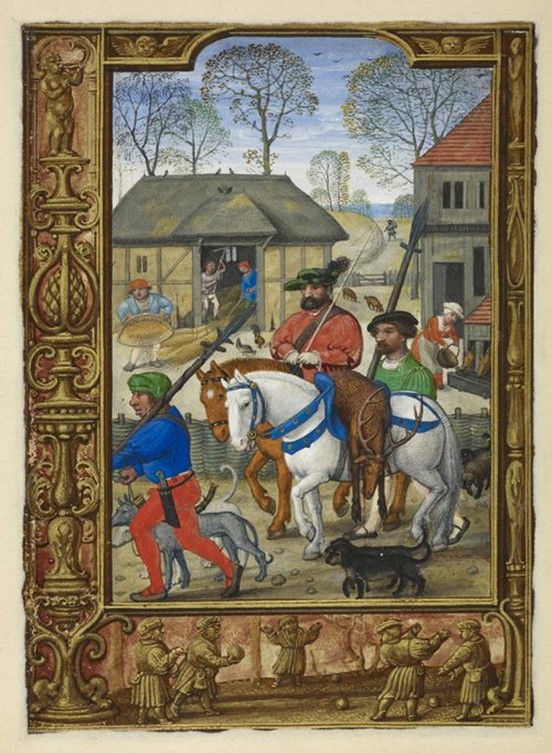
Book of Hours, known as the Golf Book November (f. 28v), c. 1540, 30 Parchment leaves on paper mounts, bound into a codex, 110 x 80 mm (text space: 85 x 60 mm), British Library, London, UK
https://blogs.bl.uk/digitisedmanuscripts/calendars/page/10/
I like spring, but it is too young. I like summer, but it is too proud. So I like best of all autumn, because its leaves are a little yellow, its tone mellower, its colours richer, and it is tinged a little with sorrow and a premonition of death. Its golden richness speaks not of the innocence of spring, nor of the power of summer, but of the mellowness and kindly wisdom of approaching age. It knows the limitations of life and is content. From a knowledge of those limitations and its richness of experience emerges a symphony of colours, richer than all, its green speaking of life and strength, its orange speaking of golden content and its purple of resignation and death… writes Lin Yutang (1895-1976) in My Country and My People. Do we see sorrow and a premonition in Simon Bening’s November page? https://www.goodreads.com/quotes/123171-i-like-spring-but-it-is-too-young-i-like
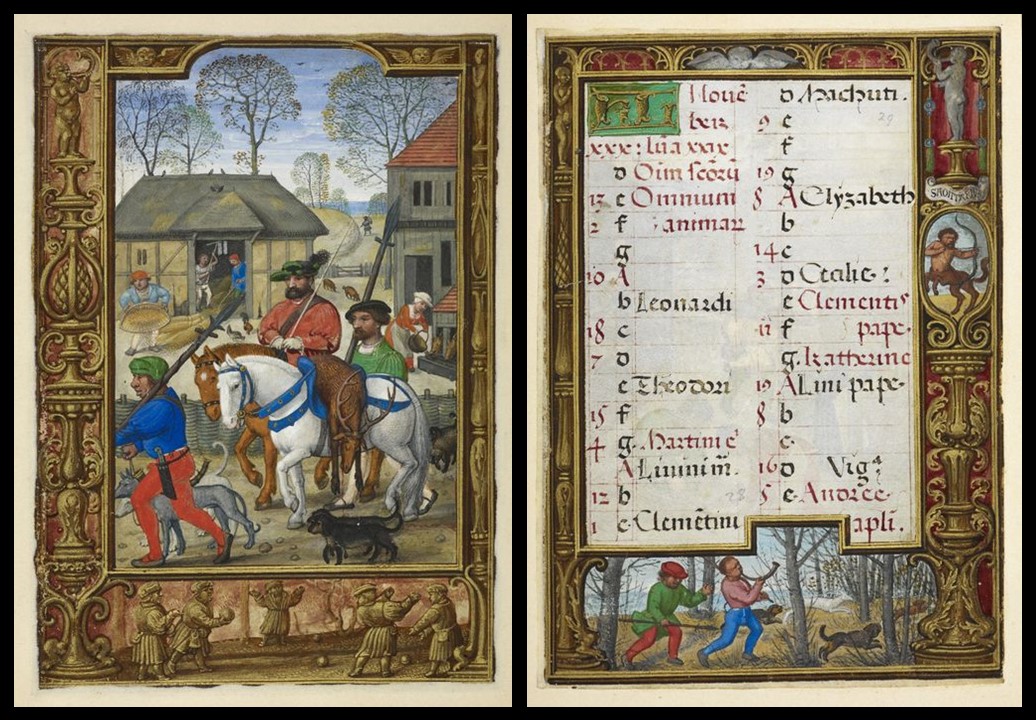
Book of Hours, known as the Golf Book November (f. 28v and f. 29r), c. 1540, 30 Parchment leaves on paper mounts, bound into a codex, 110 x 80 mm (text space: 85 x 60 mm), British Library, London, UK
https://blogs.bl.uk/digitisedmanuscripts/calendars/page/10/
Simon Bening, combining autumnal tones of cool, greys and blues, and warm ochre and reds, organized a “busy” three parts composition. The background sets the tone! Outside a well-tended, fenced farm, the Flemish countryside turns to winter. The land has been harvested, and the tall (poplar?) trees are thinning out, dropping their leaves. The sky is clear, but the birds fly low, suggesting a change in the weather. The middle ground of folio 28verso is my favourite. The depicted Flemish farm is bustling with activity! Peasants, male and female, can be seen feeding their chickens and pigs, while laborers are busy preparing the farm’s buildings for winter!
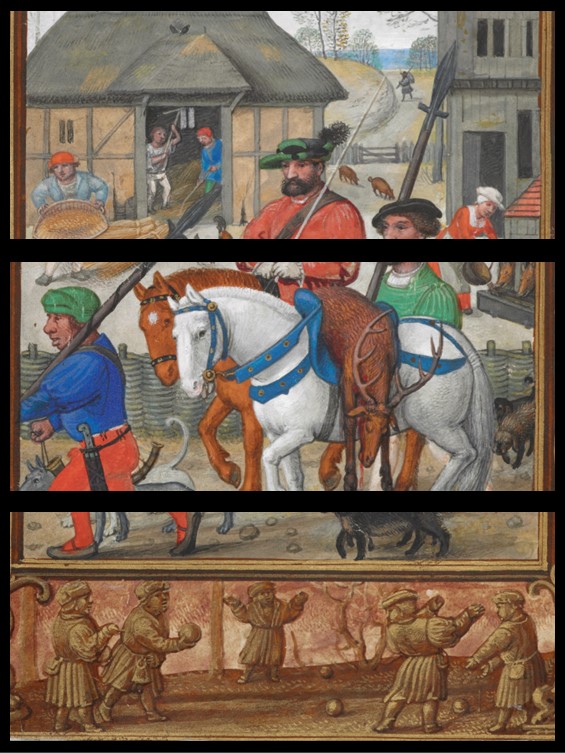
Book of Hours, known as the Golf Book November (f. 28v and f. 29r, Details), c. 1540, 30 Parchment leaves on paper mounts, bound into a codex, 110 x 80 mm (text space: 85 x 60 mm), British Library, London, UK
https://blogs.bl.uk/digitisedmanuscripts/calendars/page/10/
While the farmers are shown busy with various activities, the scene in the foreground of folio 28verso, the return of the group of hunters, presents the aristocratic activity of hunting. The portrayed nobleman, in the center of the foreground area, dominates the composition. Riding his auburn mount, wearing gloves and carrying a fine javelin or thin whip in his left hand, he gallops next to a white horse, that carries the trophy of the day, a magnificently antlered stag. The two horses and their “riders” are flanked by the servants who must have hounded and attacked the “trophy” animal. The servant in front, the master of the hunt, with a spear leaning on his left shoulder and a large, sheathed knife hanging from one side of his belt and a hunting horn hanging from the other, holds the leashes of two whippets. The only visible part of the servant at the back of the group is the lance leaning on his right shoulder. They are followed by two pairs of dogs. The full-page miniature scene for November is dedicated to Hunting which takes center stage! https://www.moleiro.com/en/books-of-hours/the-golf-book-book-of-hours/miniatura/166
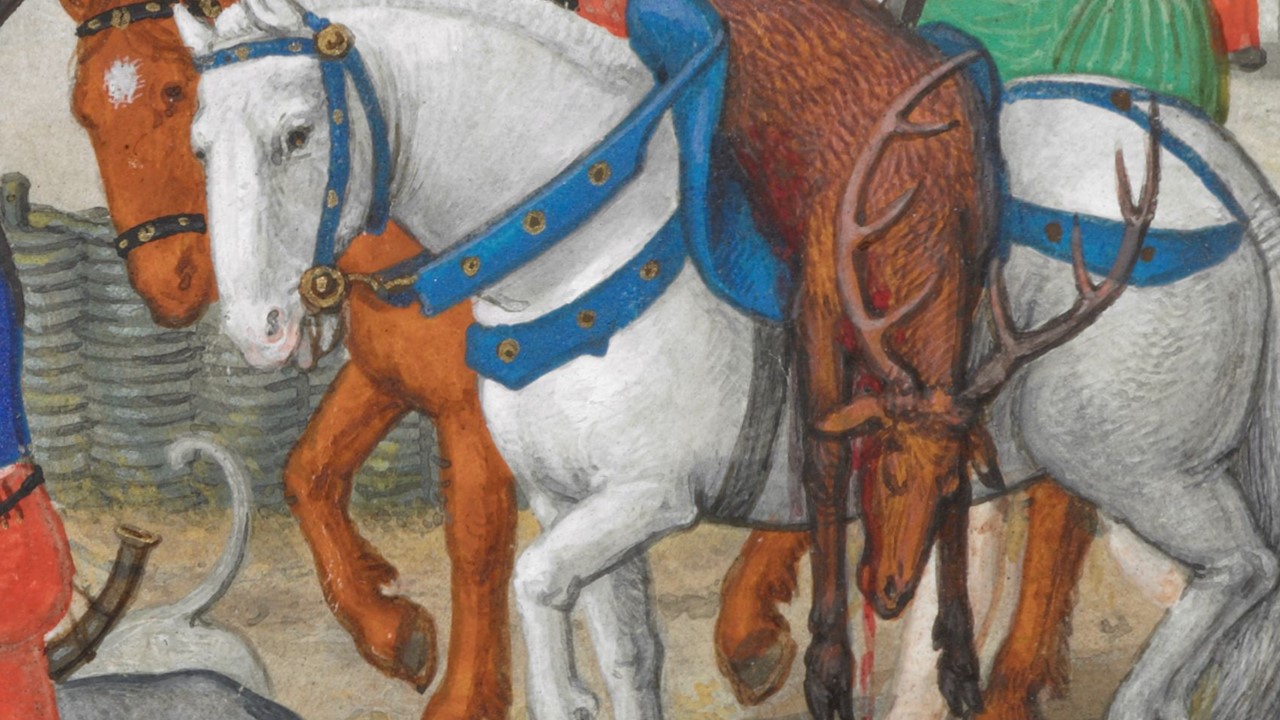
Book of Hours, known as the Golf Book, November (Detail, f. 28v), c. 1540, 30 Parchment leaves on paper mounts, bound into a codex, 110 x 80 mm (text space: 85 x 60 mm), British Library, London, UK https://www.bl.uk/manuscripts/Viewer.aspx?ref=add_ms_24098_fs001r
The 16th-century Book of Hours, known as the Golf Book, is a very unique and special manuscript in the Collection of the British Library. Unfortunately, the Golf Book is not, in its present state, a complete manuscript as most of the text is now missing. Thirty parchment leaves, however, remain, twenty one pages of which, are full-page miniatures, in colours and gold, surrounded by a historiated border (12 pages are part of the Calendar section). The remaining forty pages feature historiated borders as well, that incorporate medallions, architectonic decoration, and cameos in grisaille and semi-grisaille. The text pages present large and small initials and line-fillers, in colours and gold. Simon Bening (d. 1561), with the assistance of his workshop, was the artist from Bruges responsible for this amazing manuscript. Bening’s accomplishments will feature in the Month of February Presentation. http://searcharchives.bl.uk/primo_library/libweb/action/dlDisplay.do?docId=IAMS032-002031376&fn=permalink&vid=IAMS_VU2
For a PowerPoint on the Golf Book, please… Check HERE!
For a Student Activity on Simon Bening’s November page, please… Check HERE!
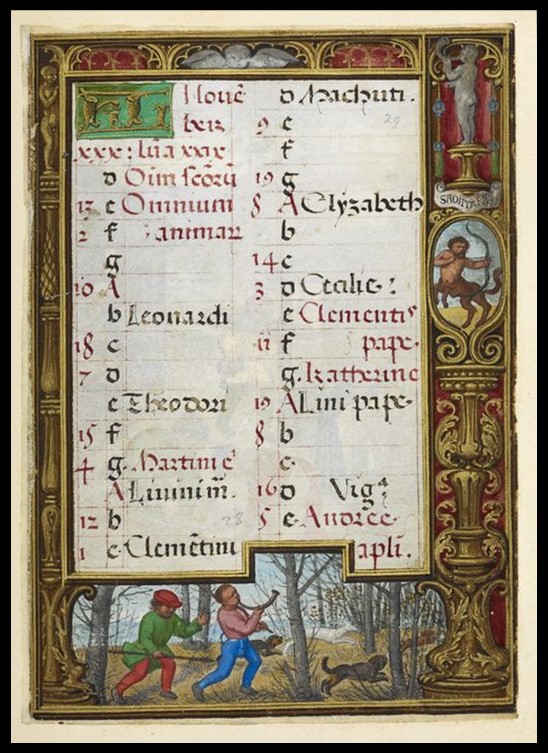
Book of Hours, known as the Golf Book November (f. 29r), c. 1540, 30 Parchment leaves on paper mounts, bound into a codex, 110 x 80 mm (text space: 85 x 60 mm), British Library, London, UK
https://blogs.bl.uk/digitisedmanuscripts/calendars/page/10/
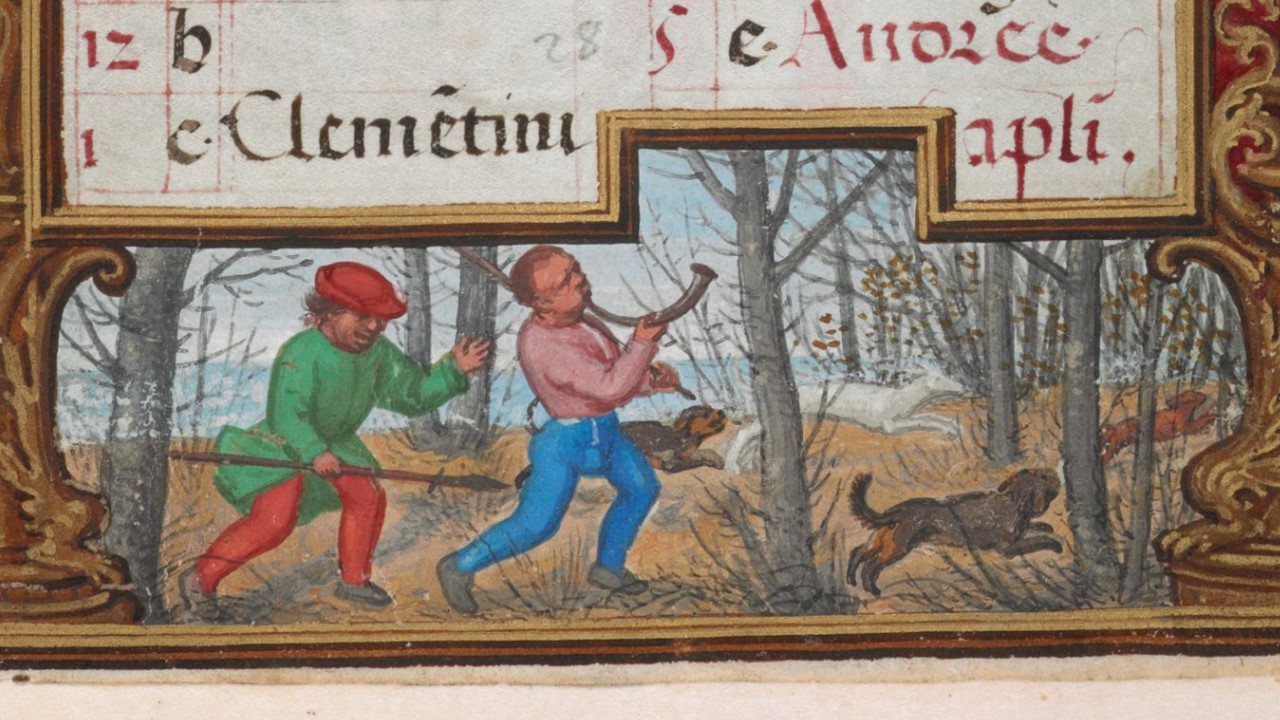
Book of Hours, known as the Golf Book November (f. 29r, Detail), c. 1540, 30 Parchment leaves on paper mounts, bound into a codex, 110 x 80 mm (text space: 85 x 60 mm), British Library, London, UK
https://blogs.bl.uk/digitisedmanuscripts/calendars/page/10/